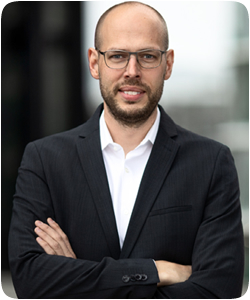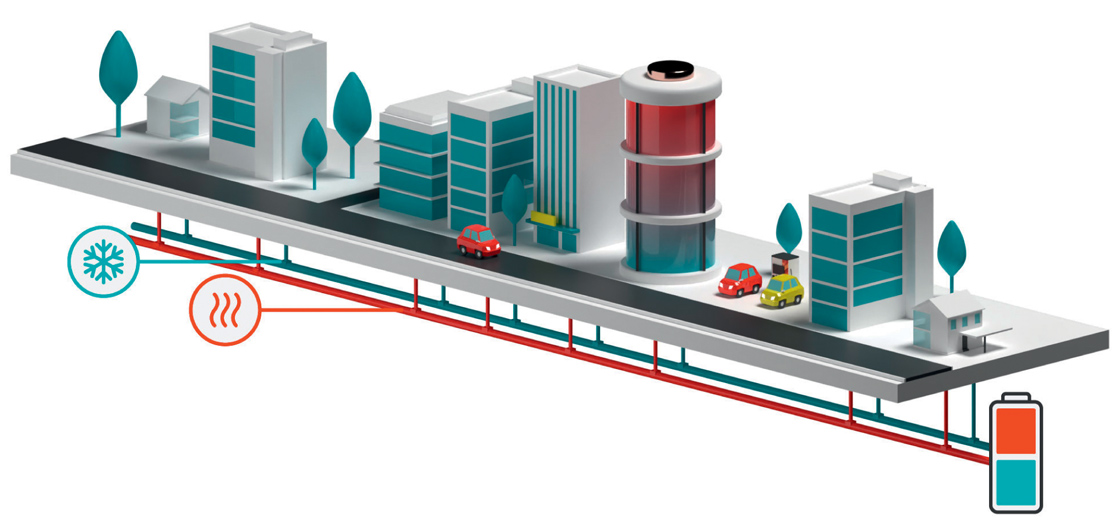 Revolutionary green technologies like E.ON ectogridTM demonstrate that reducing emissions is much more than switching to renewable energy generation.
Revolutionary green technologies like E.ON ectogridTM demonstrate that reducing emissions is much more than switching to renewable energy generation.
In the long-term, Greenhouse gas emissions cannot be eliminated only changing the way energy is generated. Energy efficiency and other measures of reducing consumption and recovering energy should also be considered as levers for reducing emissions.
That's why E.ON has been much more than just an electricity and gas supplier for many years. As one of the largest operators of energy networks and energy infrastructure in Europe and as a provider of innovative solutions, we now provide more than 50 million customers in 16 countries with smart solutions. By doing this we are decisively driving forward the energy transition in Europe and are committed to sustainability and climate protection.
The focus of all our activities is to ensure that the Europe-wide climate goal formulated in the Paris Climate Agreement does not remain simple “lip service” and to make the biggest possible contribution to the EU for achieving this. Our entire portfolio of solutions is geared towards supporting private customers as well as companies and cities in their decarbonisation efforts.
When you consider that process heat alone accounts for 40% of energy consumption in industry and commerce in Germany, and that around half of the heat used in industry is lost unused as waste heat, it becomes abundantly clear that above all, the energy transition is a heat transition. Therefore, the focus should also lie on the sensible reuse of unused heat. This does not just apply to industries but also to cities, which are responsible for 40% of energy consumption.
The example shows that it is not enough to set targets for individual sectors, but to work out much more creative methods on CO2 avoidance. Unfortunately, there is no such thing as a single "silver bullet" that will solve all our problems. Rather, it is necessary to analyze all (production) processes. First, it is important to use energy generation methods that are as carbon-free as possible – electricity first. In a second step it must be checked whether systemrelated energy, mostly in the form of heat, can be recovered or used in some other way. Sustainability, costs, security of supply and efficiency are all high on the list of requirements and want to be met.
An example of new coupled solutions in this segment is the use of waste heat from data centers for supplying local district heating networks. In the past, the temperature levels were too different and using the waste heat was inefficient. But with the development of our ectogridTM technology, there now exists a new way of doing that. E.ON ectogridTM is a complete energy system for heating and cooling that enables the sharing, balancing and storage of energy for entire neighborhoods and cities and can thus help achieve zero emissions. Due to the complexity, new forms of cooperation must be developed first by introducing new actors. For example, municipal heating planning, which introduces further framework conditions into the process, plays a decisive role.
The European Commission and national legislators are pushing the energy transformation with legislative packages and funding programs. We expressly welcome the commitment of the European Commission and the will to shape these transformation processes. At first glance, the road is a rocky one, but it is nevertheless necessary.
Municipalities and industry are closely monitoring the various funding opportunities (like horizon framework, Innovation Fund, Life, CEF,...) offered by the EU. However, it has been shown again and again that these calls are extremely oversubscribed, i.e. the probability of funding is low and at the same time there is a lot of effort involved in preparing application documents. In most cases, this acts as a deterrent to participating in the calls. And it is not only CAPEX funding is important, but OPEX funding as well. Recently, CCfDs (Carbon Contracts for Difference) have been increasingly discussed.
Recently, CCfDs offer the possibility of taking out risk for the operator by means of a fixed contract price. At second glance, however, it is unclear to what extent this funding instrument contributes to planning security. Because it is not possible to create a business case in which there is no certainty about possible repayments. In any case, the funding instruments for both CAPEX and OPEX funding should be further developed.
At the beginning of every transformation process, it is important to demonstrate that a new technology or system can be implemented. The promotion of large lighthouse projects is suitable for this. To create a broad impact on the masses, however, many mediumsized and smaller projects must now also be funded to benefit from scaling. The aim and framework should always be focused on the climate impact. It is necessary that service providers and contractors are also included in the general conditions.
Industries and cities, with their high emissions, face enormous challenges on the road to climate neutrality. We are convinced that the transformation can only succeed with intelligent solutions that are at the same time decentralised, future-proof, and above all, efficient. In the E.ON Energy Infrastructure Solutions unit, we're working to provide industries and cities with tailored energy solutions that meet these requirements – whether it's heating, cooling, power generation, or energy efficiency. We are convinced that strong partnerships can bring ecology and economy together and thus create unimagined joint opportunities – benefit from unconventional ideas, amazing synergies, and lower energy costs.

Contact details
Dr. Patrick Ester has been working on research and innovation topics in the energy industry for more than 15 years. Decarbonisation is the order of the day and the basis for the transition to the solar age. That's why he is very happy to be able to promote the energy and heat transition within E.ON as a change maker. Today Patrick is responsible for the Value Pool Public Funding within E.ON Energy Infrastructure Solutions (EIS).
Get in touch: patrick.ester@eon.com
More about Patrick: https://www.linkedin.com/in/dr-patrick-ester-48426590/
More about E.ON Energy Infrastructure Solutions: http://www.eon.com/eis